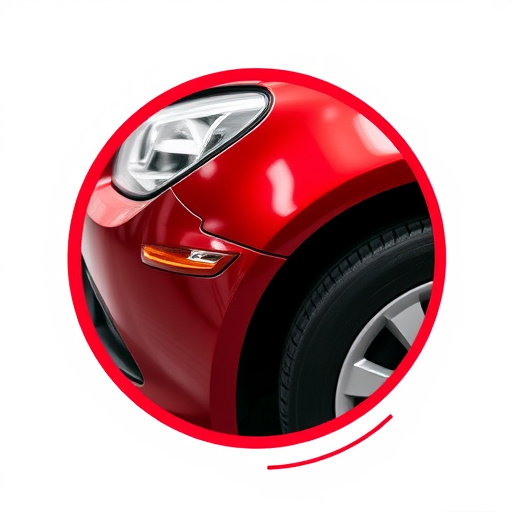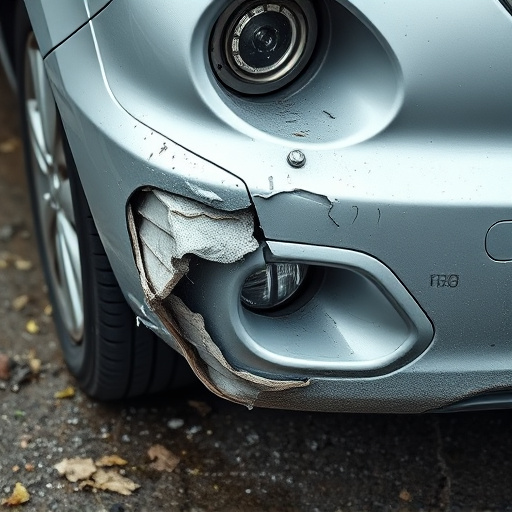Mastering Ultrasonic Dent Detection Techniques: A Comprehensive Guide

Ultrasonic dent detection revolutionizes auto restoration by using high-frequency sound waves to unc…….
Welcome to an in-depth exploration of a groundbreaking technology transforming dental diagnostics and treatment planning—Ultrasonic Dent Detection. This innovative process is reshaping the way dentists assess and manage oral health, offering enhanced precision, efficiency, and patient care. In this comprehensive article, we will navigate through various facets of ultrasonic dent detection, from its technical foundations to its global impact and future potential. By the end, readers will grasp the significance of this technology and its promise for improving dental practices worldwide.
Definition:
Ultrasonic dent detection, also known as ultrasound-based dental imaging, is a non-invasive diagnostic technique that utilizes high-frequency sound waves (ultrasound) to create detailed images of teeth, gums, and surrounding structures. This technology has revolutionized dental care by providing a novel way to visualize dental conditions that were previously challenging to diagnose accurately.
Core Components:
Historical Context:
The concept of using ultrasound in dentistry emerged in the mid-20th century with early attempts at dental ultrasonics. However, significant advancements occurred in the late 1990s and early 2000s, driven by improvements in transducer technology and computing power. These breakthroughs led to the development of portable, user-friendly ultrasonic dent detection systems, making the technology more accessible to dental practices worldwide.
Significance:
International Influence:
Ultrasonic dent detection has gained global recognition and adoption due to its numerous advantages. According to a 2022 report by Market Research Future (MRFR), the global dental ultrasound market is projected to reach a value of USD 697.3 million by 2027, growing at a CAGR of 8.5% during the forecast period (2020-2027). This rapid growth indicates the technology’s increasing importance worldwide.
Regional Trends:
Market Dynamics:
The global market for ultrasonic dent detection exhibits steady growth, driven by rising dental awareness, aging populations, and increasing demand for advanced diagnostic tools. Key players include companies like KaVo (Germany), UltiMed (US), and NSK (Japan), each contributing innovative solutions to the market.
Investment Patterns:
Economic Impact:
Innovations Shaping the Field:
Impact and Future Potential:
Key Policies and Frameworks:
Influence on Development:
Main Concerns:
Proposed Solutions:
Case Study 1: Early Detection Saves the Day
A private dental practice in Toronto, Canada, adopted ultrasonic dent detection as part of its routine check-ups. During an examination, the dentist identified a subtle carious lesion that would have gone unnoticed with traditional methods. Prompt treatment using ultrasonic guidance led to a successful outcome, preventing further damage. This case highlights the technology’s ability to detect early-stage conditions, potentially avoiding complex and costly treatments later.
Case Study 2: Revolutionizing Pediatric Dentistry
A children’s dental clinic in Tokyo, Japan, integrated ultrasonic dent detection into its practice, aiming to make dental visits more comfortable for young patients. The system’s non-invasive nature and high-resolution images helped build trust with anxious children. As a result, the clinic saw an increase in patient satisfaction and a decrease in sedation requirements for complex procedures.
Case Study 3: Remote Consultation Success
A dentist in a rural area of Australia utilized ultrasonic dent detection to consult with a specialist located in a nearby city. The specialist remotely analyzed ultrasound images and provided expert advice, ensuring quality care despite the distance. This case demonstrates the potential of wireless technology to bridge geographical gaps in dental care.
Growth Areas:
Emerging Trends:
Strategic Considerations:
Ultrasonic dent detection has emerged as a transformative technology in dentistry, offering enhanced diagnostic capabilities, improved treatment planning, and a safer, more patient-centric approach. Its global impact is evident across diverse regions, with growing adoption driven by technological advancements and evolving healthcare landscapes. As this technology continues to evolve, it holds the promise of revolutionizing dental care, ensuring better oral health outcomes for people worldwide.
Q: How does ultrasonic dent detection differ from traditional dental X-rays?
A: Ultrasonic dent detection uses high-frequency sound waves to create detailed images, while dental X-rays utilize ionizing radiation. Ultrasound is safe and non-invasive, making it suitable for routine check-ups and pediatric dentistry. X-rays, on the other hand, provide a different type of image with higher resolution for specific diagnostic needs but expose patients to radiation.
Q: Can ultrasonic dent detection replace traditional dental examinations?
A: No, ultrasonic dent detection is not meant to replace traditional dental examinations. Instead, it serves as a valuable adjunctive tool, providing additional data that complements visual exams. Dentists use both methods together for a comprehensive understanding of oral health.
Q: How accurate is ultrasonic dent detection in diagnosing dental conditions?
A: Studies have shown high accuracy rates for ultrasonic dent detection in diagnosing various dental conditions, especially caries and periodontal diseases. However, like any diagnostic tool, it has its limitations, and interpretation by skilled professionals is essential for reliable results.
Q: Are there any safety concerns associated with ultrasonic dent detection?
A: The use of ultrasound in dentistry is considered safe due to the low-energy sound waves employed. There are no known significant health risks associated with this technology. However, as with any medical device, proper training and adherence to manufacturer guidelines are crucial for safe usage.
Q: Can ultrasonic dent detection be used for dental research?
A: Absolutely! The detailed images provided by ultrasonic dent detection offer valuable insights into dental structures and conditions. Researchers can use these images for studies in various dental specialties, contributing to advancements in understanding oral health and disease prevention.

Ultrasonic dent detection revolutionizes auto restoration by using high-frequency sound waves to unc…….

Ultrasonic dent detection revolutionizes auto repair by emitting sound waves to locate and measure h…….

Ultrasonic dent detection transforms car damage assessment by using sound waves and imaging to revea…….

Ultrasonic dent detection is a revolutionary technology for automotive repair, utilizing high-freque…….

Ultrasonic dent detection, using high-frequency sound waves, revolutionizes automotive repair and de…….

Ultrasonic dent detection is a revolutionary technology in automotive repair, surpassing traditional…….

Ultrasonic dent detection revolutionizes auto body services with precise measurements, detailed imag…….

Ultrasonic dent detection is transforming auto repair by offering superior precision and efficiency…….

Ultrasonic dent detection revolutionizes car bodywork repairs with non-destructive testing using hig…….

Ultrasonic dent detection is a game-changing technology for vehicle safety, using high-frequency sou…….